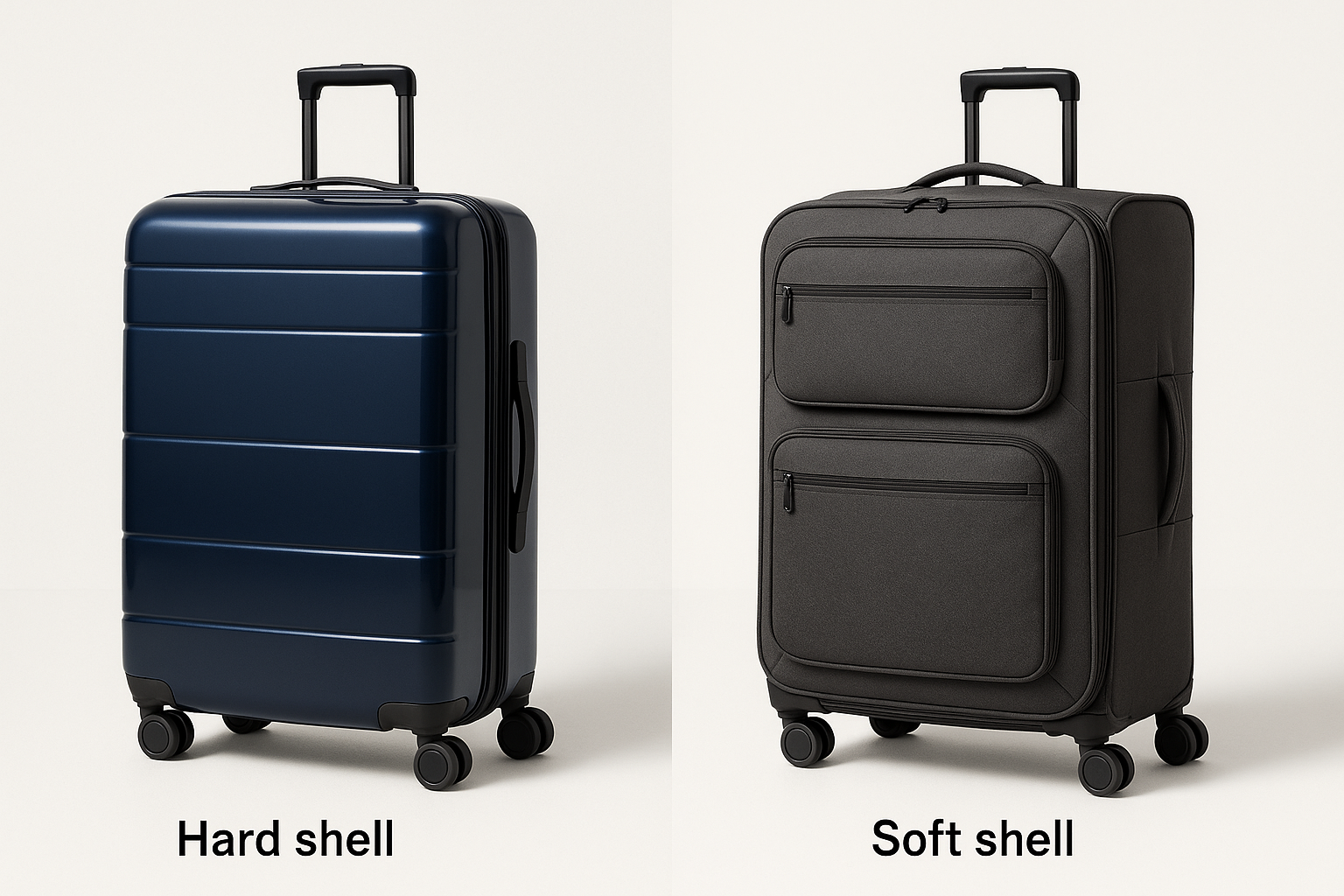
The Role of Carbon Offsetting in Luggage Manufacturing: Greenwashing or Genuine?
The word sustainability has been declared as the buzzword of the decade, and that is not without reason. With their climate fears intensifying, every industry, including the fashion or furniture business, finds it necessary to reconsider their impact on the environment and language production is not an exception. Now, numerous brands boast of carbon offset schemes and guarantee a palette of guilt-free travel equipment. However, the problem is whether these assertions are factual or merely ingenious greenwashing.

Now that we have unscrambled the notion of carbon offsetting in luggage production, understood how it is used, and what a truly environmentally responsible brand choices such as Koora luggage, based in Australia, is doing instead.
What Is Carbon Offsetting?
Carbon offsetting is the practice of compensating for greenhouse gas emissions by funding projects that reduce or remove carbon dioxide elsewhere. In the context of luggage manufacturing, this often means:
-
Planting trees to absorb CO₂ from the atmosphere.
-
Investing in renewable energy projects like wind or solar farms.
-
Supporting community-led initiatives that reduce deforestation or promote sustainable agriculture.
The idea is simple: if your manufacturing process emits a certain amount of carbon, you “neutralise” it by funding activities that cancel it out.
Why Luggage Brands Are Turning to Offsetting
Luggage production is resource-oriented. Whether it be the sourcing of raw materials, moulding of hard shells, fabric sewing, finishing and shipping of goods across the globe, the process is a carbon-intensive one.
As people insist on environmentally friendlier approaches to business, offsetting provides organisations with an opportunity to advertise their efforts to eco-conscious consumers who do not require the business to turn over their entire supply chain and go completely green in one night. It has been viewed as a shortcut in the attachment to branding sustainability.
But the purpose and how it's done are everything. There are brands with offsetting as part of a bigger sustainability plan. Other… just apply it as marketing gloss.
The Problem with Greenwashing
Greenwashing is the misrepresentation of or exaggeration of environmental actions undertaken by brands in order to seem more environmentally friendly than they are. The example in manufacturing of luggage could be the following:
-
No transparency: A brand says it is offsetting its emissions, saying, “we offset all our emissions”, and provides no information or evidence on how they do it.
-
One-off offsets: Just paying to clean up one offset project and still using virgin plastics, virus dyes, etc.
-
Irrelevant projects: Compensating by doing other things that have nothing to do with what it is they are doing that damages the environment directly.
To the environmentally aware traveller, this makes categorising a real difference between image-laden publicity challenging.
How to Spot Genuine Carbon Offsetting Efforts
If you want to support luggage brands that truly walk the talk, look for:
-
Full Supply Chain Auditing
Brands should measure emissions at every stage — from raw material extraction to packaging and delivery. -
Third-Party Certification
Verified Carbon Standard (VCS), Gold Standard, or Climate Neutral certifications ensure credibility. -
Offset + Reduction
Genuine brands don’t just offset; they actively reduce emissions through design and production changes. -
Transparent Reporting
Annual sustainability reports should clearly outline emissions data, offset methods, and project outcomes.
Koora’s Approach: More Than Just Offsetting
As an Australian-based sustainable luggage brand, Koora believes carbon offsetting is not a get-out-of-jail-free card — it’s the final step in a much bigger sustainability process.
Here’s how Koora approaches it:
-
Material Choices First: Koora uses recycled hard-shell composites and eco-certified fabrics, reducing emissions from the start.
-
Local Production Partnerships: By working closely with local artisans and Australian suppliers where possible, Koora cuts down on overseas shipping emissions.
-
Durability as a Priority: A longer-lasting suitcase means fewer replacements, which translates to fewer emissions overall.
-
Offsets Only for the Unavoidable: After reducing and reusing at every stage, Koora invests in verified Australian carbon offset projects — like restoring coastal mangroves that naturally capture carbon while protecting marine biodiversity.
For Koora, carbon offsetting is a way to balance the books, not to write a green fairy tale.
The Traveler’s Role in Carbon-Conscious Choices
As a traveler, you also play a part in ensuring your luggage purchase aligns with your values. Here’s how:
-
Ask Questions: Where are materials sourced? How is the product made?
-
Look for Longevity: Choose luggage that will last a decade, not a season.
-
Support Certified Brands: Stick with brands whose offsetting is verified and transparent.
-
Consider Usage Patterns: If you travel infrequently, you may not need multiple suitcases — buy thoughtfully.
Offsetting Alone Isn’t Enough
While carbon offsetting is a valuable tool, it’s not a substitute for systemic change. Imagine a factory producing massive emissions and then funding tree planting elsewhere. It’s better than doing nothing — but it doesn’t tackle the root problem: the factory’s pollution.
In luggage manufacturing, the real win comes from emissions avoidance through:
-
Recycled and low-impact materials.
-
Cleaner energy use in production facilities.
-
Repairable, modular designs that extend a suitcase’s lifespan.
Offsetting works best when paired with these deeper efforts.
Why This Matters for the Future of Travel
The travel industry, such as luggage manufacturing, is on a turnaround. Climate policy is getting stricter, and travellers are wishing to be more selective. Every company that markets itself as carbon neutral but does nothing is losing credibility pretty quickly.
On the other hand, the attitude driven by the sustainability embedded in a larger brand promise is the nature of behaviour that will help generate long-term brand loyalty among consumers who will want environmentally responsible products.
Koora applied the model, explained it, reduced (first), offset (second), that is, getting industry industry-leading model and positioning it as a high-end, durable suitcase can be an environmentally responsible product too.
Final Thoughts: Genuine or Green-washing?
Carbon offset connected with luggage manufacturing may appear real in cases where it is clear, verified, and forms a larger emission-reduction policy. But when it is taken as the single sustainability message, then it is hugging close to green-wash.
The distinction is made between those brands that employ an offsetting supplement and those that apply it as an alternative to significant change.
What the traveller should remember after reading this is evident: do not go by the label. Questions you might want to ask are, how is the luggage produced, what is it produced out of and does offsetting come as the last ingredient, not the entire meal.
It is proving possible to make beautiful, tough luggage brands such as Koora have been upfront about the reality of making products as carbon neutral as possible. Ultimately, true sustainability in luggage production is not merely the question of carbon balancing, but also of the reinvention of the manufacturing-using-valuing process of our travel objects all the way through.



Leave a comment
This site is protected by hCaptcha and the hCaptcha Privacy Policy and Terms of Service apply.